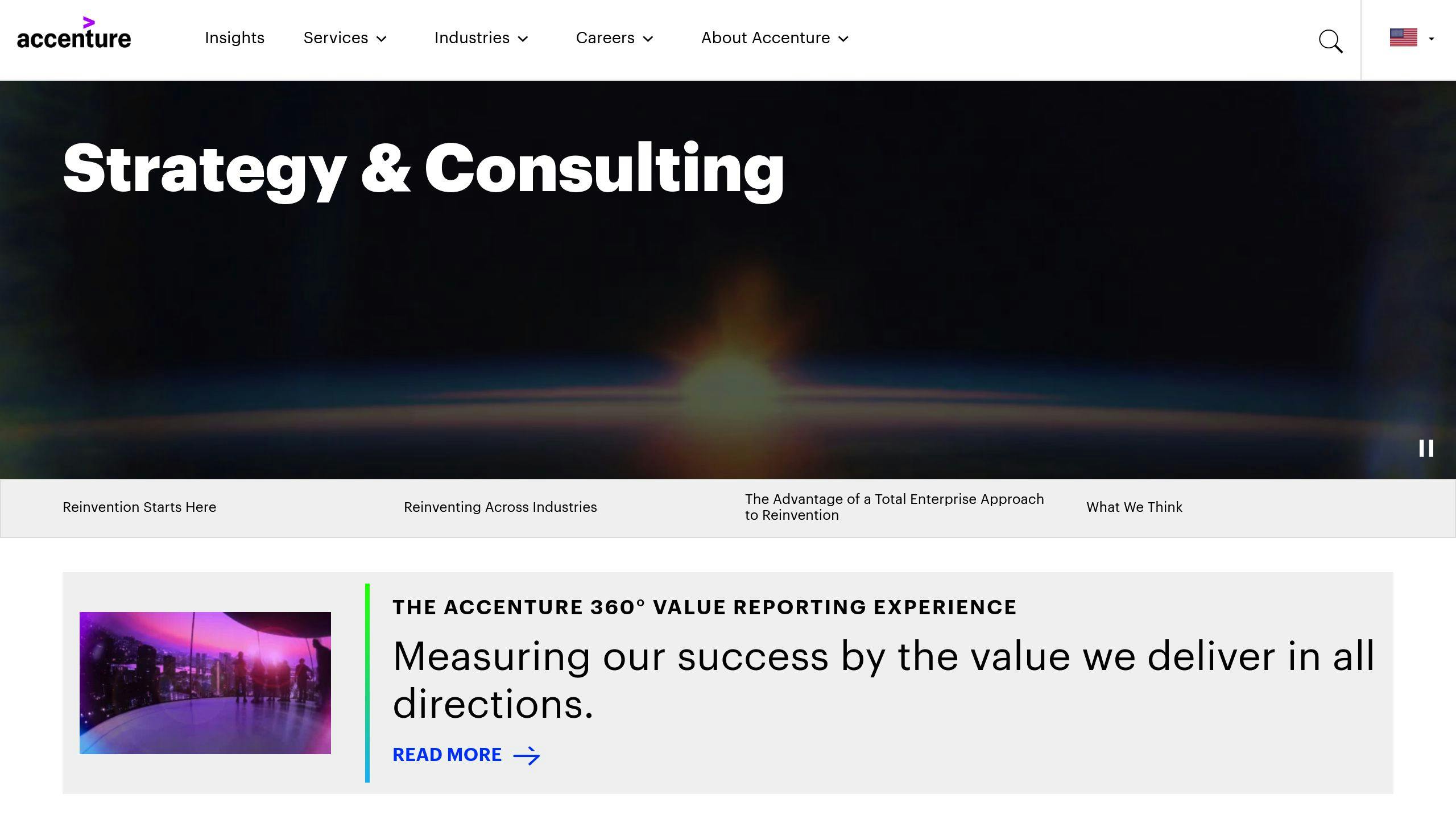: A Guide for Businesses
AI is reshaping business, but only 14% of organizations are truly ready. AI readiness frameworks help companies assess their position and plan for AI adoption. Here's a breakdown of 3 key frameworks:
-
Accenture AI Maturity Model
- Categorizes companies into 4 groups based on AI skills
- Only 12% are top performers (AI Achievers)
- Focus: Tech assessment, clear stages
-
Trust Insights 5P Framework
- Breaks down AI integration into 5 components: Purpose, People, Process, Platform, Performance
- Emphasizes data readiness before AI implementation
- Focus: Practical implementation, people-centric
-
Five-Pillar Assessment Framework
- Covers tech and organizational aspects
- Pillars: Business Strategy, Technology Strategy, AI Strategy & Experience, Organization & Culture, AI Governance
- Focus: Balanced approach, risk management
Quick Comparison:
| Framework | Best For | Key Strength | Main Weakness |
|---|---|---|---|
| Accenture | Large companies | Deep tech assessment | Resource-intensive |
| 5P | Small businesses | Easy to understand | Less technical |
| Five-Pillar | Medium-sized firms | Balanced approach | Needs company-wide buy-in |
Choose based on your company size and AI maturity. Remember: Focus on data quality, start small, and align with business goals.
Related video from YouTube
1. Accenture AI Maturity Model

Accenture's AI Maturity Model is a game-changer. It sorts companies into four groups based on their AI skills. How did they come up with this? They talked to 1,600 big shots from 1,200 companies. It's like a roadmap for businesses, no matter where they are on their AI journey.
Let's break it down:
| Group | What They're Like | How They Perform |
|---|---|---|
| AI Achievers | Top-notch AI skills, great at getting things done | 3.5x more likely to make big bucks from AI |
| AI Builders | Good basics, but struggle with talent | Can't quite nail the AI culture |
| AI Innovators | Bosses love AI, but the nuts and bolts are missing | Weak in data and AI basics |
| AI Experimenters | Not great at... well, anything AI-related | Below average across the board |
Here's the kicker: only 12% of companies are AI Achievers right now. But by the end of 2024? That number's set to more than double to 27%. These top dogs are killing it in every category.
"Cloud is the enabler, data is the driver and AI is the differentiator", says Julie Sweet, Accenture's CEO. She's nailed it - these things are all connected when it comes to making AI work.
Want to level up your AI game? The model says focus on these three things:
- Make AI a big deal in your company. Get the top dogs involved.
- Use AI to shake up how you do business. Make it count.
- Build AI systems that are responsible and ethical. Don't be evil.
Now, you might be thinking, "But I run a small business!" Don't worry. This model works for the little guys too. Start with the basics and work your way up. Between 2018 and 2021, companies got way better at using data in new ways. So, progress is possible, no matter your size.
One last thing: this model is big on AI training and talent. Why? Because AI skills are hot right now. If you want to keep up, you've got to keep your team sharp and ready for whatever AI throws at you next.
2. Trust Insights 5P Framework

The Trust Insights 5P Framework offers a practical approach to AI readiness assessment. It breaks down AI integration into five key components:
| Component | Focus Area | Key Question |
|---|---|---|
| Purpose | Strategic Goals | Why use AI? |
| People | Stakeholders | Who's involved? |
| Process | Implementation | How to execute? |
| Platform | Tools & Tech | What solutions? |
| Performance | Metrics | How to measure? |
This framework is a hit with SMEs because it's straightforward. Katie Robbert, CEO of Trust Insights, says:
"The five P framework is a decision making tool for businesses. It helps you gather simple business requirements and it helps give you direction and keep you on course."
The framework stresses data readiness before jumping into AI. Christopher Penn, Co-founder of Trust Insights, puts it bluntly:
"If data is the raw ingredient for AI, so if you don't know what you have, and you don't know quality is, you can't really go any further."
In action, this framework proved its worth when Trust Insights used it with a client. Instead of rushing to tech solutions, they pinpointed the real goal: finding ways to boost team wages. This led to a focused, effective AI strategy.
The framework's power comes from its top-down approach. Companies start with big-picture goals and work down to specific metrics. This keeps AI projects in line with business aims, not just tech for tech's sake.
Rayni Kertadjaja, a consultant familiar with the framework, notes:
"An intentional framework clearly and transparently outlines the 'why,' keeps both users and developers informed, presents answers to the most pressing business questions, and bolsters trust and understanding."
For SMEs looking to use this framework:
- Define your AI adoption purpose clearly
- Get team members from different departments involved
- Set concrete performance metrics
- THEN pick your platforms and tools
This approach ensures your AI efforts stay focused on what matters to your business.
sbb-itb-bec6a7e
3. Five-Pillar Assessment Framework
The Five-Pillar Assessment Framework takes a holistic view of AI readiness. It covers both tech and organizational aspects, focusing on building trustworthy AI systems that actually work in practice.
Here's what the framework looks like:
| Pillar | Focus | Key Points |
|---|---|---|
| Business Strategy | Goals | Clear objectives, use cases, measuring value |
| Technology Strategy | Infrastructure | AI-ready setup, build or buy decisions |
| AI Strategy & Experience | Implementation | Picking models, aligning with use cases |
| Organization & Culture | People | Leadership buy-in, managing change |
| AI Governance | Risk Management | Trust, ethics, responsible AI |
IDC found that 71% of companies say they use AI. But making it work? That's trickier. You need to nail all five pillars.
Patrick Vinton, CTO at Analytics8, warns:
"Organizations risk over-utilizing generative AI by making it 'the process' rather than 'part of the process.'"
But when done right, this framework gets results. Take Siemens. They used it to build an AI system that predicts when gas turbines need maintenance. The result? 10% less downtime and big cost savings.
Danny Haydon, Head of Customer Engagement, puts it this way:
"The companies most successfully leveraging AI today are prioritizing the five pillars of AI success to transform their business."
For small and medium businesses, success boils down to lining up tech and business readiness. Data shows that companies with clear business goals for their AI projects are 3x more likely to see big returns.
The framework suggests putting an 'AI Evangelist' in the C-suite to drive change across the company. This person keeps tabs on the AI strategy, tweaking it as needed. It's a smart move for smaller companies with tight budgets.
Mark Coronna says:
"If the key to successful AI deployment is about business readiness, then your goal should be to move your organization to the Target State."
Strengths and Weaknesses
AI readiness frameworks offer different pros and cons for SMEs looking to use AI. Let's break it down:
The Accenture AI Maturity Model is great for tech assessment but might be overkill for smaller companies. Vincent Yates, Chief Data Scientist at Credera, puts it this way:
"The true measure of AI maturity lies not in achieving a universal standard but in how effectively AI is integrated to solve real-world problems and create value in your specific context."
The Trust Insights 5P Framework? It's all about practical implementation. Katie Robbert, CEO of Trust Insights, nails it:
"You can't just give someone a new tool and say, use it and make it great. There has to be consideration for the people involved."
The Five-Pillar Assessment Framework gives you a balanced view, but you'll need to commit to it. Here's a reality check: 97% of companies want to use AI, but only 14% are actually ready for it.
Here's how these frameworks stack up:
| Framework | What's Good | What's Not | Who It's For |
|---|---|---|---|
| Accenture AI Maturity Model | Deep tech assessment, Clear stages | Complicated, Needs lots of resources | Big companies with AI teams |
| Trust Insights 5P | Easy to understand, Focuses on people | Not super technical, Less structured | Small businesses starting with AI |
| Five-Pillar Assessment | Balanced approach, Clear structure | Needs company-wide buy-in | Medium-sized firms with some AI know-how |
But here's the thing: many frameworks don't cover important stuff like data privacy and ethics. That's a big deal for small businesses. Ali Arsanjani points out:
"The principle of open-source, deeply ingrained in software development, has made its way to AI."
Want a real-world example? Look at Zillow. Their AI-powered Zillow Offers program crashed and burned, leading to 2,000 job cuts in 2021. Why? The market was too unpredictable. This shows why you need a framework that can handle real-world curveballs and manage risks.
Key Takeaways
Picking the right AI readiness framework boils down to your company's size and how far along you are with AI. IDC's numbers show 71% of companies use AI, but getting it right? That's where a good framework comes in handy.
Here's the scoop: 32% of organizations have hit the Operational stage with AI. That's a big jump - companies aren't just playing around anymore, they're putting AI to work. As Mohammad Omar from LXT puts it:
"2023 was the year of AI and became an imperative for companies of all sizes."
If you're a smaller company just dipping your toes in the AI pool, here's what you need to know about each framework:
| Framework Type | Who It's For | What to Expect | Main Focus |
|---|---|---|---|
| Basic Assessment | New-to-AI SMEs | 90% growth potential | Data and tech setup |
| Maturity Model | Growing mid-size firms | 72% level up | Smooth operations |
| Comprehensive Framework | Companies ready to scale | 62% focus on quality | Fitting AI into the big picture |
By 2027, companies are set to pour $423 billion into AI, growing at a rate of 26.9% each year. That's why picking the right framework is a big deal - it's about spending smart. Mark Coronna nails it:
"AI technology is NOT a business strategy. It's not even a technology strategy."
Want to get it right? Focus on data quality, not quantity. 62% of AI success stories do just that. Start small with pilot projects. Make sure your framework fits both your tech skills and business goals. And remember, getting AI-ready isn't a one-and-done deal - it's about keeping up and growing with the tech.


